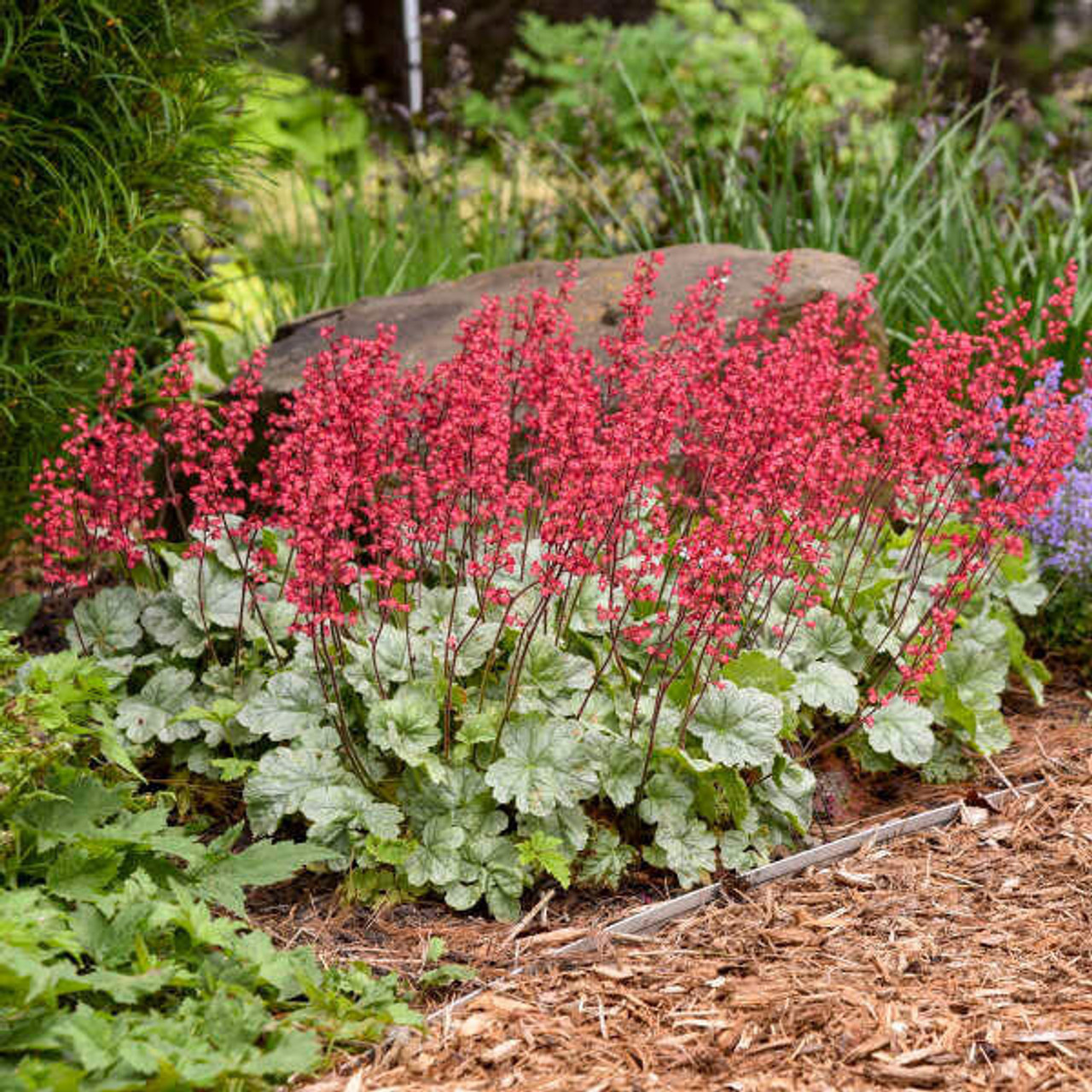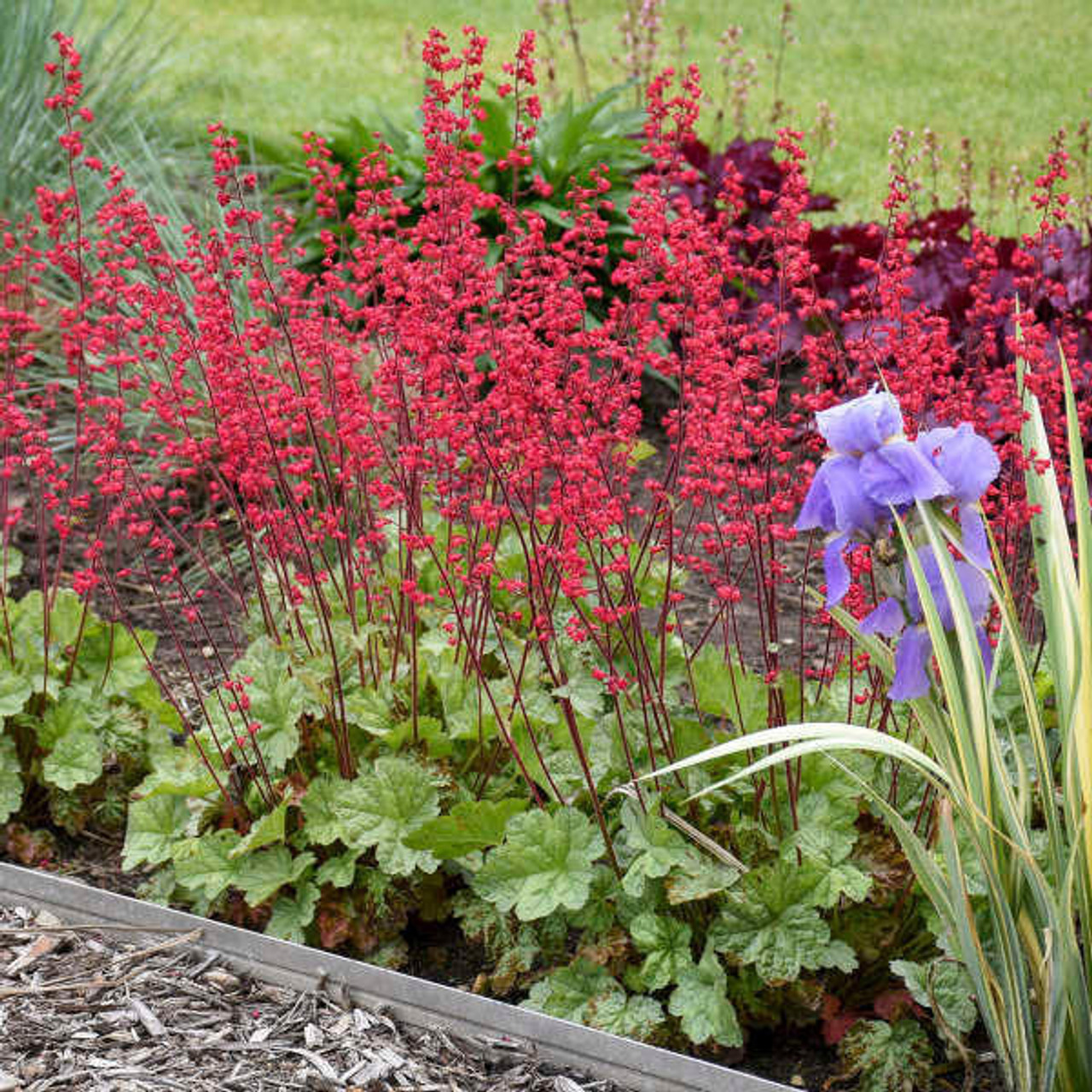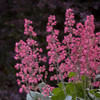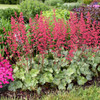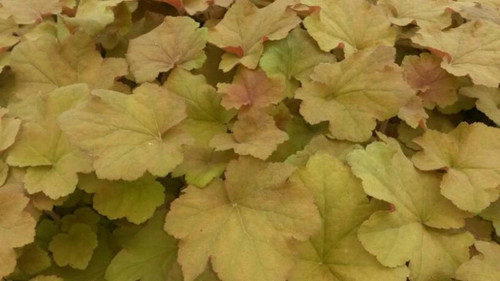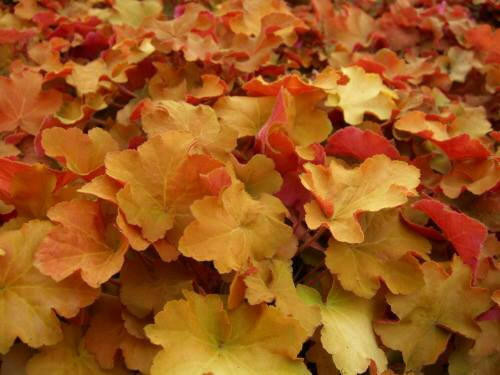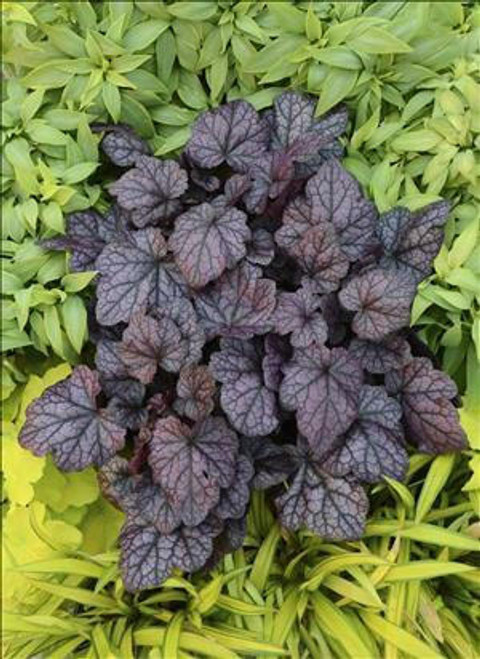Product Description
Heuchera 'Spearmint' PP31281 CPBRAF (4) 1-gallons
DOLCE® series
Common Name: Coral Bells
Just like the popular 'Silver Gumdrop', this Heuchera boasts both beautiful foliage and excellent flower performance. Silvery green leaves have dark green veins. Compared to 'Appletini', this is a rich, deep shade of green rather than chartreuse yellow. Although the foliage is attractive by itself, what really makes this plant stand out is the fabulous long season of bloom. The flowers are bicolor, with dark pink petal tips and light pink bases are produced early to midsummer. Stunning!
Coral bells are easy to grow and blend easily with most other perennials in the landscape. Because of their low, mounding habit, they are often used as edging along paths or in containers. Try cutting a few of the tall flower scapes for fresh bouquets.
Heucheras are easy perennials to grow and fit nicely in the front of any border, rock garden, or container. They grow most vigorously and have the strongest colors when grown in partial shade (preferably afternoon shade). They can also be grown in full shade, but their growth rate will be very slow. Some varieties can withstand full sun in northern climates if they have consistent moisture, but their colors tend to fade with the intensity of the sun. The soil should be amended with organic matter prior to planting. It should also have good drainage and a neutral pH.
Heucheras are evergreen in areas with mild winters. If properly sited out of the way of winter winds and with reliable snow cover, gardeners in northern regions may also find their heucheras acting as evergreens. If the plant looks tattered by early spring, shear off any damaged leaves to make room for the vibrant new foliage which will fill in quickly.
Heucheras can be grown under Black Walnut trees because they are resistant to the toxin Juglone which the trees emit from their roots.
Heucheras are also salt tolerant. They are useful in the north along pathways which are salted in winter or for people gardening in coastal regions. Occasionally in northern regions, heucheras have a tendency to heave out of the ground because of the freeze/thaw cycle. To combat heaving, add an extra layer of compost around the plant's roots in the fall. In the spring, if the plants have heaved at all, the new roots will grow into the fresh new layer of compost.
Height: 8.0-10.0 Inches
Spread: 26.0-30.0 Inches
Scape Height: 18.0-22.0 Inches
Hardiness Zones: 4,5,6,7,8,9
Flower Color: Pink Shades
Foliage Color: Green shades
Full Sun (> 6 hrs. Direct Sun) to Full Shade (< 4 hrs. Direct Sun)
Average Water Needs
Poor to Average Soil Quality
Bloomtime: Midsummer to Late Summer
Attracts Butterflies
Attracts Hummingbirds
Bee Friendly
Deer Resistant
Evergreen
Growth Rate: Medium
Border Plant, Cut Flower, Cut Foliage, Easy To Grow, Edging, Attractive Foliage, Mass Planting, Salt Tolerant
Appearance:
- Foliage: The heart of its charm lies in its unique foliage. 'Spearmint' boasts silvery green leaves with prominent dark green veins, creating a captivating two-toned effect. The leaves have a rounded, slightly ruffled shape, adding texture and interest.
- Flowers: In summer, 'Spearmint' produces delicate, airy panicles of bicolor flowers. The blooms feature dark pink tips and light pink bases, creating a lovely contrast against the silvery green foliage.
Growing Conditions:
- Light: Thrives in partial shade to full shade. It can tolerate some sun, but it is best to avoid direct afternoon sun, especially in hot climates.
- Soil: Prefers rich, humusy, well-drained soil.
- Hardiness Zones: Generally hardy in USDA zones 4-9, making it adaptable to a wide range of climates.
Uses:
- Versatile: 'Spearmint' is a versatile plant that can be used in various ways in the landscape. It is excellent for adding color and texture to borders, woodland gardens, or container plantings.
- Groundcover: It can also be used as a groundcover in shady areas, creating a lush and vibrant carpet of foliage.
- Companion Plant: 'Spearmint' pairs beautifully with other shade-loving plants, such as hostas, ferns, and astilbes.
Additional Benefits:
- Long Blooming: 'Spearmint' is known for its long blooming period, providing color and interest throughout the summer.
- Attracts Pollinators: The flowers attract bees, butterflies, and hummingbirds to the garden.
- Deer Resistant: Generally, deer-resistant, making it a good choice for areas with deer pressure.
- Salt Tolerant: 'Spearmint' is also salt tolerant, making it suitable for coastal gardens.
Overall, Heuchera 'Spearmint' is a fantastic addition to any garden, offering a unique combination of striking foliage, charming flowers, and easy care.
(4) 1-gallon containers ready to plant, plants maybe trimmed for shipping,
Other Details
The most important part of the plant is its root system. Healthy roots are the foundation of a healthy, vibrant plant. The type of plug container used is based on the specific needs of the plants. Perennials offered as bare root traditionally perform better when planted as bare root.Planted in a specialized mix, potted plants have well established root systems. Top growth stage will vary depending on the current life cycle and time of year when shipped. In Winter and early Spring dormant plants may be shipped. Dormant plants may be planted right away, even before the last frost date.
Most bare root varieties are field grown for at least one season, though Hemerocallis and Hosta are grown for two seasons. The bulk of the soil is removed during the harvesting process and the tops of most varieties are trimmed back to the crown. They are graded, packed in shredded aspen or sphagnum moss and stored in freezers until ready to be shipped.
See our Container Sizes and Bare Root Perennials pages for more information.
Plant information and care is provided in the Overview section, Plant Genus Page and general information is provided in the Planting Care & Guides. Additional questions can be asked on each Plant page.
Plant Spacing: Using the maximum mature spread or width of a plant to guide spacing, ensures space to grow to full size. To fill an area sooner, plant them closer together. Just remember, future thinning or transplanting may be needed.
Water: Keep a close eye on newly planted perennials, especially throughout the first growing year. Most early plant loss is due to too much or too little water!



